Firstly:
- Hinduism is a religion.
- While Hindutva is a political and cultural ideology that seeks to define Indian identity primarily in terms of Hindu culture and religion. Thus, Hindutva does not just refer to religious Hinduism, but rather to a political-cultural ideology that sees India as fundamentally a Hindu nation. Hindutva is just like "Political Islam". Both of them are not seen as peaceful movements.
Secondly:
Hindutva supporters assert that Vedic (Hindu) gods created the universe and then mankind, completely rejecting the theory of human evolution, just as many traditional religions across the world tend to do. However, scientific and archaeological evidence paints a very different picture, one grounded in facts, not faith.
Thirdly:
Despite popular beliefs, Hinduism in its recognizable Vedic form does not predate 3,500–4,000 years. The earliest elements of what we now call Hinduism were introduced by Indo-Aryan migrants who came into the Indian subcontinent from the Pontic-Caspian Steppe (present-day Ukraine, Russia, and Kazakhstan). These people brought with them:
-
The Sanskrit language, the root of many modern Indian languages;
-
The Vedas, foundational religious texts of Hinduism;
-
And other cultural elements that shaped early Indian civilisation.
Yet, modern Hindutva ideology denies this migration theory entirely. Instead, it promotes the "Out of India" theory (OIT), which falsely claims that Aryans were native to India and later spread outward to Europe. However, this view is not supported by mainstream scholarship or genetic science.
Fourthly:
Archaeologists and historians agree that there is no trace of Vedic religion, Hindu deities, Sanskrit language, or temple worship in the Indian subcontinent before 1500 BCE.
-
No temples or idols of Hindu gods
-
No inscriptions or artifacts related to any sign of Hinduism
-
And even not a single cave paintings of anything related to Hinduism
All point to the same conclusion: Hinduism did not exist in India prior to the arrival of Indo-Aryans.
Fifthly:
The Indus Valley Civilization (IVC)—which thrived between 2600 and 1900 BCE in parts of present-day Pakistan and northwest India—was a remarkably advanced urban culture. Cities like Harappa and Mohenjo-daro featured complex drainage systems, granaries, and written scripts.
However, none of the artifacts recovered from IVC sites show any connection to later Hindu beliefs:
-
No Vedas
-
No images of Hindu gods like Shiva, Vishnu, or Brahma
-
No Sanskrit
-
No temples
This clearly indicates that the Indus Valley Civilization and Hinduism were two separate cultural phases. The former declined around 1900 BCE, while the latter only emerged with the migration of Aryan peoples later.
Sixthly:
Genetic studies have added a critical layer of evidence to the Aryan migration theory:
-
Indus Valley DNA shows no Aryan ancestry, suggesting a complete absence of Steppe genetic influence.
-
In contrast, modern North Indian high-caste populations show clear signs of Steppe (Aryan) DNA, especially in male Y-chromosomes (i.e. only male Aryans invaded and migrated towards India).
This pattern suggests a historical scenario where Aryan males entered India, possibly as warrior elites, and interbred with the local population, shaping the gene pool and religious culture over generations.
Seventhly:
One of the most telling archaeological markers of Aryan influence is the horse:
-
No remains of horses or horse-drawn chariots have been found in India before 1500 BCE.
-
There are no cave paintings or depictions of horses in pre-Aryan Indian art.
-
The Rigveda, written by Indo-Aryans, includes frequent references to horses and chariots—symbols of their mobility and warfare.
These facts align perfectly with a post-IVC migration scenario, in which Indo-Aryans brought new technologies and animals previously unknown in the region.
Eightly:
The Rigveda, the oldest Hindu scripture, contains references to geographic regions and conflicts that are consistent with a migration narrative. These texts mention rivers, landscapes, and enemies that match regions west of India, further strengthening the case for Aryan migration into the subcontinent.
Conclusion:
Scientific evidence from archaeology, genetics, and linguistics clearly supports the idea that Hinduism, as we know it today, was not an indigenous or eternal faith, but rather a product of migration, cultural fusion, and evolution over time.
The belief that Hindu gods created the world and mankind is not supported by any historical or scientific evidence. Instead, Hinduism—like all religions—has a human origin rooted in a specific time, place, and set of historical circumstances.
Table of Contents:
Cave Paintings:
Hindutva followers claim that the Vedic gods were the oldest deities who created the world and that the Vedic civilization was the most ancient, known for its superior craftsmanship. However, if this were true, why do depictions of Vedic gods not predate 3500 years, while numerous other paintings and statues from different civilizations, much older than 3500 years, have survived?
Despite these claims, there is no evidence of Hinduism in India that is older than 3500 years. No Hindu temples, sculptures of Hindu gods, cave paintings, or any other archaeological proof exist from before this period.
https://en.wikipedia.org/wiki/Cave_paintings_in_India
The history of cave paintings in India or rock art range from drawings and paintings from prehistoric times, beginning around 30,000 BCE in the caves of Central India, typified by those at the Bhimbetka rock shelters.
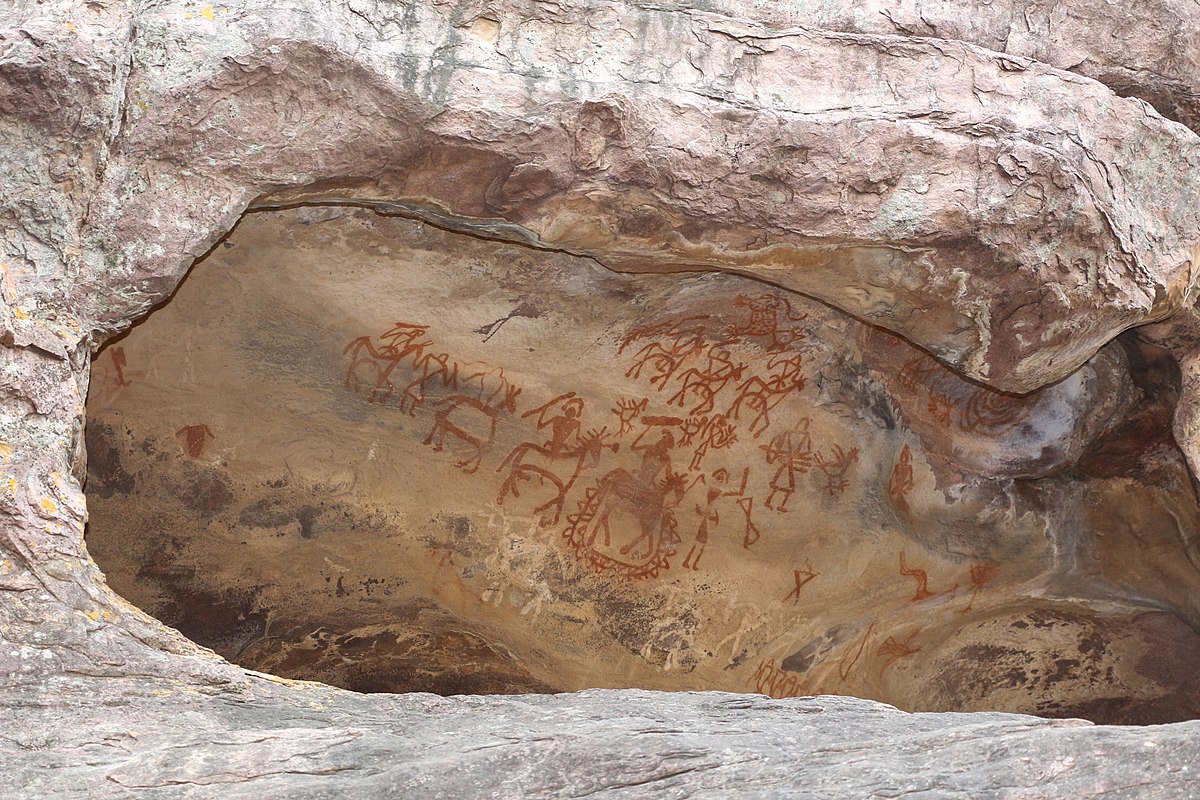
There are tons of such cave paintings etc. are present (which are older than 3500 years), but absolutely no proof of Vedic culture is present.
Indus Valley Civilization & DNA Evidence
-
DNA Analysis of Indus Valley Civilization (IVC):
- A 2019 genetic study (link) analyzed the DNA of a Harappan woman from Rakhigarhi, one of the largest cities of the Indus Valley Civilization.
- The results showed no traces of Aryan (Steppe) DNA in the Harappan population, meaning the people of IVC had no genetic link to the later Aryan arrivals.
-
Genetic Shift in Modern Indians:
- In contrast, present-day Indians have about 10% to 20% Aryan (Steppe) DNA (link).
- This suggests a significant genetic transformation after the decline of the Indus Valley Civilization.
-
The Aryan Migration/Invasion Theory:
- Scientists explain this genetic shift as the result of Aryans migrating/invading from the Russian Steppe, leading to the collapse of the IVC around 4000 years ago (Reference: livescience.com).
- DNA studies confirm that only Aryan males migrated to India—no Steppe-origin women were found in the genetic pool. This means, as conquerors, Aryan males had privileged access to local women, while indigenous men were marginalized. This led to a significant presence of Steppe male DNA in modern Indians, while the maternal lineage remained indigenous. This genetic evidence strongly supports the theory that Aryans arrived in India after the decline of the Indus Valley Civilization, reshaping its demographics and cultural landscape.
No Hindu gods were found in Harappa or Mohenjo-Daro Archeaological Sites
Although Hindutva followers claim that Indus Valley Civilization was a Vedic Society, but they have not even a single proof to back up this claim.
- Absence of Hindu gods in the Indus Valley Civilization (IVC)
- Thousands of toys, seals, and idols were discovered in Harapa or Mohenjo-Daro achaeological sites, however, not a single statues or depictions of Hindu gods were found.
- Lack of Hindu temples in the IVC
- While many houses were found in the IVC, not a single Hindu temple has been discovered in Harappa or across the entire Indus Valley.
Actually, the oldest Hindu temple (all across the Indian Subcontinent), that has been found is the Mundeshwari Temple, located in Kaimur district of Bihar, India. It is believed to date back to 108 CE, making it only about 1,900 years old.
Similarly, the oldest known statue of a Hindu or Vedic deity (across all over India) is the Shiva Lingam found at Gudimallam, Andhra Pradesh, India. This Shiva Lingam dates back to the 3rd–2nd century BCE (around 2000 years old) and is considered one of the earliest representations of a Hindu deity.
The Pashupati Seal: A Critical Examination
The Pashupati Seal, discovered in the Indus Valley Civilization, has sparked significant debate among historians, archaeologists, and religious groups. While some Hindutva followers claim it as evidence of Vedic or Hindu religion in the Indus Valley, a closer examination reveals that these claims are speculative and lack solid evidence. Let’s break down the arguments and analyze them critically.
What is the Pashupati Seal?
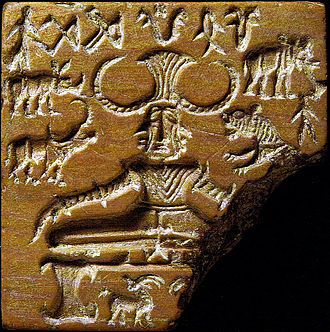 The Pashupati Seal is a small steatite seal excavated from Mohenjo-Daro, a major site of the Indus Valley Civilization (circa 2600–1900 BCE). It depicts a figure seated in a cross-legged posture, surrounded by animals such as elephants, tigers, and buffaloes. Some scholars have interpreted this figure as a proto-Shiva, specifically in his Pashupati (Lord of Animals) form. However, this interpretation is not universally accepted and remains a subject of debate.
The Pashupati Seal is a small steatite seal excavated from Mohenjo-Daro, a major site of the Indus Valley Civilization (circa 2600–1900 BCE). It depicts a figure seated in a cross-legged posture, surrounded by animals such as elephants, tigers, and buffaloes. Some scholars have interpreted this figure as a proto-Shiva, specifically in his Pashupati (Lord of Animals) form. However, this interpretation is not universally accepted and remains a subject of debate.
Hindutva Claims About the Pashupati Seal
-
Animals and Shiva’s Association:
-
Hindutva supporters argue that the presence of animals on the seal aligns with Shiva’s role as the Lord of Animals (Pashupati). They claim this similarity proves the figure is Shiva.
-
-
Yogic Posture:
-
They also point out that the figure is seated in a posture resembling Yoga, and since Shiva is considered the master of Yoga, this further supports their claim.
-
Our Response to These Claims
-
Lack of Repetition:
-
Thousands of seals and artifacts have been unearthed from the Indus Valley, but only one—the Pashupati Seal—shows a figure resembling Shiva. If Shiva were a central deity of the Indus Valley people, we would expect to find multiple depictions of him across various artifacts. The absence of such evidence weakens the claim.
-
-
No Direct Link to Shiva:
-
 The figure on the seal bears no resemblance to later depictions of Shiva in Hindu iconography. For example, Shiva is typically shown with specific attributes like a trident (trishul), a crescent moon, or a serpent, none of which appear on the seal. The identification of the figure as Shiva is based solely on the presence of animals, which is not conclusive evidence.
The figure on the seal bears no resemblance to later depictions of Shiva in Hindu iconography. For example, Shiva is typically shown with specific attributes like a trident (trishul), a crescent moon, or a serpent, none of which appear on the seal. The identification of the figure as Shiva is based solely on the presence of animals, which is not conclusive evidence.
-
-
Speculative Interpretation:
-
The idea that the figure represents Shiva is a hypothesis, not a proven fact. Scholars have proposed other interpretations, such as the figure being a shaman, a proto-yogi, or a local deity unrelated to Hinduism. Without deciphered Indus Valley scripts, these interpretations remain speculative.
-
-
Yoga in the Indus Valley:
-
There is no guarantee that the figure is sitting in a Yogic posture. If the Indus Valley people practiced Yoga, we would expect to find multiple seals or artifacts depicting similar postures. However, no such evidence exists. The Pashupati Seal stands alone, making it an unreliable basis for claiming the presence of Yoga in the Indus Valley.
-
Comparison with Celtic God Cernunnos
 Interestingly, the figure on the Pashupati Seal bears a stronger resemblance to the Celtic god Cernunnos than to Lord Shiva. Cernunnos, a deity from Celtic mythology, is depicted with horns, surrounded by animals, and seated in a posture similar to the Pashupati Seal. He is associated with fertility, prosperity, and the Lord of Animals, much like the figure on the seal.
Interestingly, the figure on the Pashupati Seal bears a stronger resemblance to the Celtic god Cernunnos than to Lord Shiva. Cernunnos, a deity from Celtic mythology, is depicted with horns, surrounded by animals, and seated in a posture similar to the Pashupati Seal. He is associated with fertility, prosperity, and the Lord of Animals, much like the figure on the seal.
-
Cernunnos: Learn more about Cernunnos on Wikipedia
In contrast, Lord Shiva in Hindu iconography is never depicted with horns, and his Yogic postures differ significantly from the figure on the seal. This raises questions about the validity of linking the Pashupati Seal to Shiva.
Thus, the Pashupati Seal is an intriguing artifact, but it cannot be considered definitive proof of the presence of Hinduism or Vedic religion in the Indus Valley Civilization. The claim that it depicts Shiva is based on conjecture rather than concrete evidence. To assert that the Indus Valley people followed Hinduism based on this single seal is an overreach.
For further reading, you can explore:
DNA of the present Indian Population
Present Indian population is a mixture of 3 ancestral groups:
- Ancient Ancestral South Indians
- The people of the Indus Valley Civilisation
- People who migrated from the Pontic Steppe (commonly known as Aryans).
None of these three groups exist today but it is their mixing that caused most of the modern Indian population to be formed.
Of these, the Ancient Ancestral South Indians were present across parts of the subcontinent that did not fall under the Indus Valley Civilisation. Their closest modern-day relatives are the tribes of the Andaman Islands.
Of these, the Indus Valley had no Steppe DNA. They mainly had a mixture of Iranian-farmer-related DNA as well as some DNA from Ancient Ancestral South Indians. In 2019, a latest research study came out about the DNA sequencing of a woman from Indus Valley civilisation. Here is the link to this study (link). This proves that Aryan Invasion happened after the Indus Valley Civilisation had already been destroyed some 4000 years ago.
Of these, the 3rd group, the Steppe population came in from grasslands in Eastern Europe corresponding to modern-day Ukraine, Russia and Kazakhstan. The genetic research identifies that this Steppe ancestry burst into India during a “narrow time window” dated between 2,000 BC and 1,500 BC.
The impact of Yamnaya steppe pastoralists
On 6th September 2019, a scientific study was published at Science (link) by Dr. Reich's and his team. They took a macro view, analysing genetic data from 523 ancient people spanning 8,000 years across Central and South Asia right up to the European Steppe – the largest study of ancient human DNA.
The summary (by scroll.in) of the findings is as under:
The spread of the Steppe pastoralists and their descendants across ancient Eurasia. The Steppe population is identified here using the name Yamnaya which refers to an ancient archaeological culture on the Pontic Steppe. It is the Yamnaya people who spoke the a language which was the ancestor of every Indo-European language in existence today, be it Bhojpuri or Welsh. The arrows show plausible routes while the years refer to rough estimates of when the Yamnaya and their descendants arrived in a place. Source: The formation of human populations in South and Central Asia.
Once these Steppe people entered India, a great churning ensued. They mixed with the Indus Valley people to create what is now called the Ancestral North Indian grouping. However, a significant portion of the people of the Indus Valley Civilisation were pushed south when the Steppe people entered. They then mixed with the Ancient Ancestral South Indians to form a group known as the Ancestral South Indian population.
For the next 2,000 years, Indians mixed freely. As a result, most modern South Asians are some mix of Ancestral North Indian and Ancestral South Indian. However, this great churning stopped around 1,900 years ago when Indian society calcified into thousands of endogamous groups who do not intermarry across caste lines – a societal structure maintained till today.
In South Asia, the Indo-European language family bought in by the Steppe people forked to give rise to the Indo-Aryan daughter branch. The first Indo-Aryan language in South Asia was Vedic Sanskrit, the language of the Rig Veda.
Much of this Steppe ancestry is male, the research shows. This means that Steppe migrants “were more successful at competing for local mates than men from the local groups” – which tells us something about the aggressive nature of Indo-Aryan migration into India. The Science paper concludes that there was an “asymmetric social interaction between descendants of Steppe pastoralists and peoples of the Indus Periphery Cline [Indus Valley Civilisation]”.
In simpler language, David Reich explains that the preponderence of male Steppe DNA means that this encounter between the Steppe pastoralists and the people of the Indus Valley Civilisation “cannot have been entirely friendly”.
This male bias is standard for Indo-European migration. In fact, when these Steppe pastoralists reached Europe, Reich’s research found an even larger proportion of male Steppe genes. In large parts of Western Europe, Steppe migrants almost completely displaced local males in a short time span, leading to one Danish archeologist postulating that the coming of these Indo-European speakers “must have been a kind of genocide”.
This pattern, wrote David Reich in his 2018 book Who We Are and How We Got Here, “is exactly what one would expect from an Indo-European-speaking people taking the reins of political and social power 4,000 years ago and mixing with the local peoples in a stratified society, with males from the groups in power having more success in finding mates than those from the disenfranchised groups”.
This ancient encounter is, incredibly, reflected even in the present-day Hindu caste system, with Steppe DNA correlated with upper-caste status. “Groups that view themselves as being of traditionally priestly status, including Brahmins who are traditional custodians of liturgical texts in the early Indo-European language Sanskrit, tend (with exceptions) to have more Steppe ancestry than expected on the basis of ANI-ASI mixture,” says the research in Science.
Read more at Scroll.in
Please also read this scientific study of 2017, which explains more about the DNA of Indian population and it's link to the steppe, and how it were only the Male warriors of the steppe who mainly invaded India.
Hindutva movement (backed by BJP Government) protested against these modern scientific findings a lot, and caused a lot of problems for Dr. Reich's Team to publish these findings. You can read the details here.
Hindutva Claims About the Sunken City of Dwarka
Hindutva supporters often claim that the sunken city of Dwarka is proof of an 8,000-year-old Hindu civilization. They argue that Hindu religious scriptures describe Dwarka as the city of Krishna and that modern underwater discoveries confirm these ancient texts. Some even provide so-called “neutral sources” and documentaries to support their claims.
But let’s take a step back and examine the facts.
What Have Archaeologists Actually Found?
- So far, not a single Hindu god, temple, or artifact linked to Hinduism has been discovered in Dwarka.
- The Mahabharata describes Dwarka as a city with 900,000 royal palaces made of crystal and silver, decorated with emeralds.
- The city supposedly had grand roads, marketplaces, assembly houses, and temples.
But when archaeologists investigated, what did they actually find?
A few underwater stones. That’s it. No crystal, no silver, no emeralds, but just some scattered ruins, like many other sunken settlements across the world.
So where is the evidence that this was the mythical Dwarka described in Hindu scriptures? The truth is, Hindutva narratives rely more on religious mythology than real archaeology.
Hindutva's False Propaganda About Dwarka's Underwater Ruins
Be cautious of Hindutva's misleading claims about the so-called grand underwater ruins of Dwarka. They have been circulating fake images on such a massive scale that it has become difficult for an average person to find accurate information online.
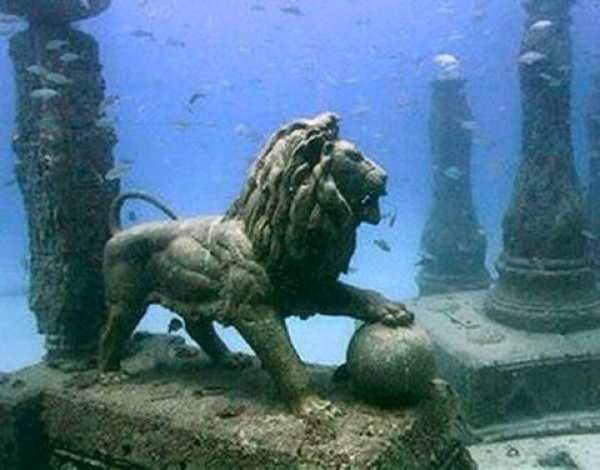
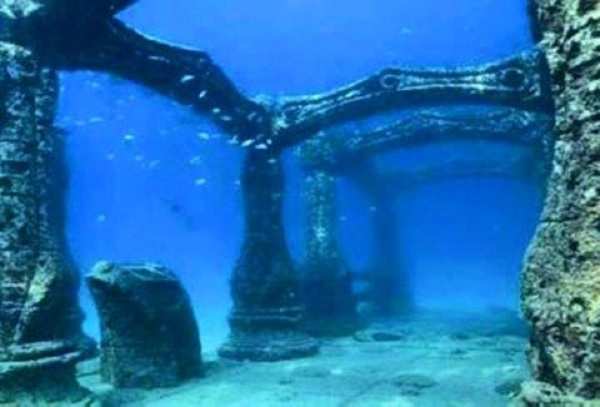
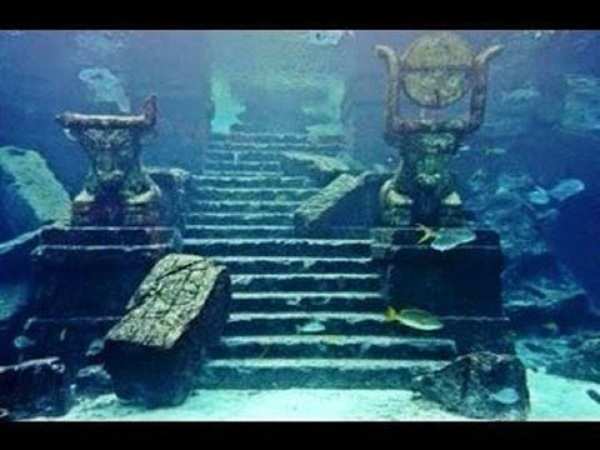
In reality, no grand structures have been discovered. Only a few scattered underwater stones have been found, as shown in this BBC report (video).
Furthermore, these deceptive images have been fact-checked by the Times of India (link), confirming that they are false.
This isn’t the first time Hindutva has tried to twist history to fit its agenda. When no historical evidence supports their claims, they either:
- Stretch the truth by misinterpreting findings.
- Use religious texts as "historical records" instead of actual archaeology.
- Cherry-pick vague discoveries and ignore contradicting evidence.
The bottom line? The real Dwarka, if it existed, is nothing like the grand city described in the Mahabharata. What Hindutva presents as "evidence" is little more than an attempt to rewrite history for ideological purposes.



 Hassan Radwan
Hassan Radwan